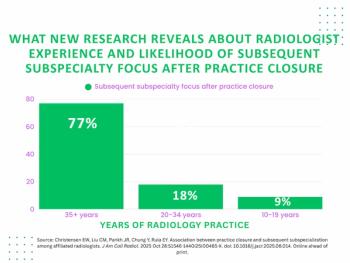
National differences coexist with EC unity
The Western European market for medical imaging systems remainsdivided along national lines despite efforts to create a unifiedmarket within the European Community by January 1993. Imagingvendors active in Europe will keep their national sales and
The Western European market for medical imaging systems remainsdivided along national lines despite efforts to create a unifiedmarket within the European Community by January 1993. Imagingvendors active in Europe will keep their national sales and serviceorganizations, although they expect some logistical advantagesas barriers to the flow of inventory and personnel across bordersease.
"The European Community and the U.S. are not identical,"said Peter H. Grassmann, group executive for Siemens Medical ofGermany. "We have language and cultural barriers, and theindependence of national governments is much higher. Therefore,we will continue to have national organizations."
Although economic harmonization will improve within the EC,there has not been major progress in harmonizing social laws.Consequently, national markets are considerably different. Germanyhas a large private medical market, for instance, while the Netherlandsand Great Britain have relatively little private participation,he said.
National health-care systems and reimbursement regimes willremain distinct at least through the end of the decade, he predicted.
Differences in health-care systems have resulted in a disparityin medical technology utilization among Western European markets.The per capita density of medical imaging equipment remains highestin Germany, although countries such as Italy and Spain are gainingin terms of new equipment sales, Grassmann said.
Shifting national sales activity has caused Siemens to modifyits national organizations slightly, although the top Europeanimaging vendor rarely opens new offices in Europe these days.The trend, instead, is to make use of modern communications toreduce administrative expenses. More personnel work out of theirhomes using telephones and fax machines. Siemens is shifting itspersonnel resources from administrative to technical and salesfunctions, Grassmann said.
While EC unification may not evolve fully by 1993, major changesshould occur by the end of the decade. These may include a unifiedcurrency and more standardized health systems, said Hans van Bree,president and CEO of Dutch vendor Philips Medical Systems.
"Maybe we will have all our quotations in a European currency.It would save us another 100 administrators or so," he said.
Philips, the second largest European medical imaging vendor,has reorganized its European structure into 10 regions to handle22 countries. The regional structures take advantage of evolvingunification, while keeping the vendor close to its customers andaware of local differences, van Bree said.
"We talk about Iberia and not Spain and Portugal, forinstance, and we treat Benelux as an area," he said.
ALL MEDICAL IMAGING VENDORS MUST SWIM in these countervailingcurrents of regionalism and nationalism in Western Europe. Sinceits acquisition of France's Thomson-CGR four years ago, GeneralElectric has sought to become a European company, while buildingon its French base to grow in the national markets of Germany,Italy, Spain and the U.K., said Steven C. Riedel, president andCEO of GE-CGR.
GE-CGR is seeking a regional approach in terms of product anddistribution systems. The evolution of EC unification will allowthe vendor to develop a European spare parts and logistics system,he said.
As customs barriers come down, daily truck routes will delivermaterial from point to point within the continent and across theEnglish Channel. Service technicians will travel from countryto country, building up their experience and improving their installationskills, he said.
At the same time, GE is improving its national focus by translatingall documentation into at least five major European languages.
"In one sense, we become more European; in another sense,we try to do a better job in each locality within Europe,"Riedel said.
Picker's bipolar structure in Europe, announced last monthat the European Congress of Radiology in Vienna, will help thatimaging vendor improve its position in Western Europe outsideof Germany.
Picker GmbH of Frankfurt will focus on strengthening its establishedposition in the German market and building new business in EasternEurope and the Soviet Union. A new Paris-based organization willhelp Picker target the other western countries (SCAN 10/9/91).
"We are trying to play from a hand of strength,"said Christopher J. Peabody, Picker senior vice president forinternational operations. "It is important to look at thewhole of Europe. There is a tremendous opportunity at this pointand we can't afford to wait while the competition gets there first."
Picker's revamping of its European operations is part of ayear-long process under way at the Cleveland-based company todecentralize global marketing and increase sales outside of theU.S. While doctors around the world share the desire for advancedimaging equipment, the requirements of national and regional marketsdiffer in important ways, Peabody said.
"Reimbursement rates and government involvement in marketsvary dramatically, as does the availability of finance. Customsand practices in individual countries are different. That is whyit is important to put the ability to respond out into the marketplacerather than trying to hold it centrally," Peabody said.
Apart from the two European organizations, Picker has a Canadiansubsidiary with responsibility for that national market, a Latin-Americanoffice based in Puerto Rico, and responsibility for the Far Eastcentered in Hong Kong. A central marketing group remains in Clevelandto focus on markets outside of the regional offices, includingIndia, Australia and New Zealand, Peabody said.
Newsletter
Stay at the forefront of radiology with the Diagnostic Imaging newsletter, delivering the latest news, clinical insights, and imaging advancements for today’s radiologists.






























